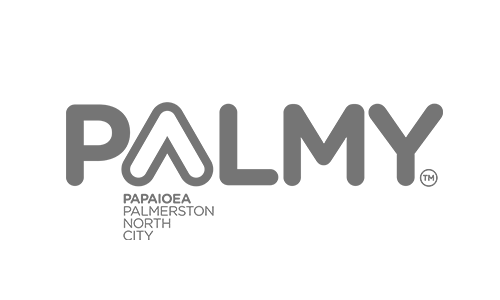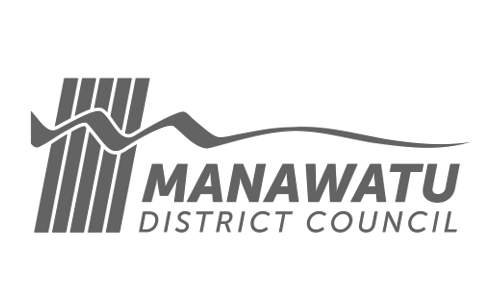Regional New Zealand continues to be the powerhouse for driving the nation’s economy and Palmerston North and Manawatū are playing leading roles, according to a series of recent economic reports.
Manawatu’s growth and strength across diverse sectors means we are not overly reliant on the success of one or two sectors, nor are we exposed as much to the slowing growth of others.
The past quarter shows the city and region’s economic growth continuing to be underpinned by the rural sector and high returns for meat and dairy. This is complemented by the huge amount of construction activity in both the residential and commercial markets.
While the rate of the region’s growth has slowed ever so slightly, it is still out pacing the national average. GDP increased by 2.9 per cent in the year to March 2019, compared to the national average of 2.5 per cent, according to Infometrics data. Other economic indicators that reinforce our healthy economy include strong growth in commercial vehicle registrations, traffic flows into the region and tourism spending which is growing well above the national average.
“These factors, alongside unprecedented levels of inward investment, high employment and job creation, rising incomes, proximity to the health, research and educational facilities of Palmerston North, and strong population growth will support economic growth and community development over 2019,” says Manawatu’s District Council’s Economic Development Advisor Stacey Bell.
Palmerston North and Manawatū district have also played an important role in the wider Manawatu-Whanganui region rising to second place on ASB’s Regional Economic Scoreboard, coming second to Hawke’s Bay and ahead of Gisborne and Wellington, respectively. This is a far cry from a few years ago when the region was ranked 14 out of 16 regions in September 2016.
Spending and Tourism
Our residents are big spenders locally, and this loyalty and investment into retailers is helping to keep the economy buoyant.
In the quarter to March 2019, spending rose by 4.5 per cent to $336.8 million and 70 per cent of that was by locals, according to MarketView’s Manawatū Region Quarterly Report.
“Palmerston North’s diverse retail offering and the ease of getting to different parts of the city results in big spending from visitors,” says Palmerston North City Council’s Economic Policy Advisor, Peter Crawford. Spending from Taranaki, Waikato and internationals were all up significantly in the past quarter, between 12 and 19 per cent, while spending from Wellington and Auckland dipped slightly.
Other highlights include spending in Palmerston North’s outer CBD rising by almost 15 per cent to $43.6 million. This growth in spending has largely been led by the outdoor store Torpedo 7 opening in August last year, which the owners say was because of the strong growth in online sales from the region. The opening of the new Hunting and Fishing store in Grey Street has also contributed to this growth.
The region’s commercial accommodation sector has been experiencing strong growth, with guest nights up six per cent in the year to March 2019 while national growth was just 0.6 per cent. Guest nights and the occupancy rate for commercial accommodation in the region are at record levels.
The Ministry for Business Innovation and Employment’s latest tourism data shows a small boost to our ranking in visitor spend in the region, compared to other areas in New Zealand. We (the city and district) were 13th but have moved well past Marlborough, which had total tourism spending of $397 million in the year to May 2019. Palmerston North has increased from $419 million in the year to May 2018 to $435 million in the year to May 2019.
Housing
House prices have experienced strong double-digit growth in recent years, driven by increasing demand and a shortage of supply. The average house price in the region is now $409,288 – a record high – but still significantly more affordable than the national average of $683,516. This growth reflects a 10 per cent lift in the year to March 2019, significantly higher than New Zealand’s average of 1.3 per cent.
A snap shot of the district’s average weekly rent shows it has increased by almost 47 per cent in the five years to May 2019. This compares to a 27 per cent increase in the city and a 25 per cent increase across New Zealand. Rents in the district are just $4 less than the city, at $336 per week.
“Availability and affordability of housing both in the Manawatū district and across neighbouring towns and cities is crucial to supporting wellbeing and attracting labour needed to support business growth,” says Bell. Palmerston North City Council and Manawatū District Council are in the process of releasing more land for housing developments to increase the number of new homes that will be available to meet the demand of our growing population.
But the growth in the price of rent, houses and a supply shortage are having an impact on those needing social housing with the number of families eligible for social housing in the Manawatū region having increased from 11 in March 2015 to 409 in March 2019. There are now 354 applicants in Palmerston North and 55 in our district that can either not find housing or cannot afford the housing that is available. This trend is evident across the country with eligible families increasing from 5,562 in 2015 to over 11,000 in 2019.
Labour Market
Data from the Ministry for Business, Innovation and Employment’s Online Jobs suggests it’s becoming a little easier for employers to find staff, with the number of job ads dropping nationally in May and the rate of growth across the greater Manawatu-Whanganui region dropping slightly.
There were 55,740 filled jobs in the region in the March 2018 quarter, increasing by 4.2 per cent from the previous year, while filled jobs for New Zealand increased by 3.7 per cent.
“The strength of the labour market and the career and job opportunities are leading more people to stay in the region than in previous years. The latest national migration data shows an increase in arrivals from Australia and a slowing in the number of people leaving for Australia,” Crawford says.
While the economy is in great shape, with significant impetus for growth, Bell says there are factors that do have the potential to influence levels of growth.
“Domestic capacity constraints, coupled with uncertainty around central government policy and labour market reforms, continue to weigh heavily on domestic business confidence, affecting both general business confidence and confidence at the individual business level.
“Low confidence at the individual firm level, is heightening concerns of declining levels of investment and hiring intentions, as businesses weigh the risks in the domestic and global economy. However, from current indicators there is no sign of these factors suppressing economic activity in the region at all,” she says.
Support for attracting talent to the region
To support businesses in their efforts to attract new people and staff to the region, CEDA has recently launched Move to Manawatu, a resident attraction initiative aimed at raising awareness of the career and lifestyle opportunities in Palmerston North and Manawatū.
The initiative has been designed and developed in partnership with more than 20 organisations, from business owners and managers, to human resources teams and recruitment specialists with the content designed to be shared and used.
“We undertook this planning and research to ensure Move to Manawatū isn’t a one-off campaign, but a well-thought out suite of tools and resources that can support business owners and employers who are wanting to attract talent. We know labour and skills shortages are businesses’ biggest barriers to growth, and this is just one way in which we can support them,” says Janet Reynolds, CEDA’s Marketing and Communications Manager.
The stories form part of a new content hub on ManawatuNZ.co.nz called Move to Manawatu, which also includes key facts and figures on the region like our population, house prices, and the number of cafes and parks. This content, alongside the CEDA Image Library is available for anyone to use, share and promote the lifestyle here.
For more information:
[email protected]
06 350 1830









